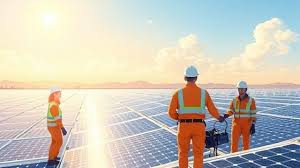Column
Nigeria, Vision 20:2020 And Power Sector
One endemic problem facing
successive
administrations in Nigeria has been the issue of generating and distributing
sufficient power to meet domestic, commercial and industrial requirements of
electricity consumers in the country. Government’s efforts and strategies to
provide regular and efficient power supply from, all indications so far, have
not yielded desired result.
With only eight years to go, the Federal Government’s
ambition to place Nigeria among the world’s 20 biggest and strongest economies
by 2020 is fast becoming a mirage as epileptic electricity supply is gradually
constituting the greatest challenge facing the country towards realising the
vision.
Whenever one reflects on the Vision 20:2020 project, the
first thing that strikes one’s mind is electricity which is yet to improve
significantly despite billions of naira pumped into the power sector. Regular power is critical to the realisation
of the economic dream.
Not too long ago, the National Electricity Regulating
Commission (NERC) revealed that Nigerians spend about N796.4 billion yearly on
fuelling their electric generators to provide themselves with electric power
(light). The figure represents federal government’s budget of N796.7 billion
for the capital expenditure for 2009 fiscal year for 36 states of the
federation. A breakdown of the statistics shows that N540.9 billion is spent on
diesel and petrol, for diesel and petrol powered engines annually.
Investigations further revealed that industries under the
auspices of Manufacturers Assocation of Nigeria (MAN) spend over N350 billion
to fuel their diesel engines to facilitate production of goods and services.
Similarly, government’s budget to buy, maintain and fuel generators each year
has been staggering, a development which has been heavily criticised.
Though the figures released were yet to be challenged by
government, it is believed that Nigerians spend even more on maintenance of
diesel and petrol-powered generating sets than fuelling alone.
The expenditure pattern in fuelling and maintaining small
and big generating engines for residential and commercial entities remains a
sad chapter in our history. The development is caused by a shortfall in meeting
the nation’s demand for electricity.
The Power Holding Company of Nigeria (PHCN) reportedly
generates only 20 per cent of national electric requirement which falls between
2,000 mw and 2,500mw.
But as part of government’s determination to meet national
demand for electricity, the federal administration vowed to deliver 6,000mw, in
addition to slightly over 2,500mw already in the national grid.
Experts however believe that Nigeria requires about 15,000mw
for power to be stable, regular and efficient so as to meet domestic,
commercial and industrial demands.
South Africa, a country with less population than Nigeria
has over 40,000mw and also generates electricity through other sources other
than hydro and thermal sourced electricity.
Therefore, the authorities must as a matter of national
emergency source other means of generating power through solar and nuclear
means.
Diversification of public power supply sources therefore is
a necessary imperative facing our leaders. Private sector investment is needed
to boost our national power needs.
Our energy base is woefully very low and constitutes a
material embarrassment to the past and present generations of Nigerian leaders.
Investors find it extremely difficult to invest in Nigeria
due to cost of generating electricity for their investment. We cannot afford to
continue this way.
The country cannot meet up with her Millennium Development
Goals (MDGs) on energy and other critical sectors of the economy with the
current energy base.
Moreso, Nigeria can never realise her Vision 20:2020 if we
remain where we are currently. The Asian Tigers who are competing favourably
with Western countries ensured that their energy source was realiable and
regular before they got to where they are today.
Thus, the only way and viable option forward is to secure
our energy base.
The attention accorded by the federal and state governments
must be sustained. The enactment of the Electricity Reform Act 2005 is a step
in the right direction. If need be the Act should be amended to further
encourage private sector participation and foreign investment.
The willingness on the part of government to address
inadequacies in the sector by deregulating the sector, thus encouraging
foreigners to put in their money in the sector is welcomed.
Column
Renewable Energy Faces Looming Workforce Crisis

Column
Why Oil Prices Could See Significant Upside Shift

Column
Nuclear Stocks Soar on Stargate AI Infrastructure Announcement
-

 Business3 days ago
Business3 days agoPETAN, Others Unveil ALCO, Get NCDMB’s Support … Mull Synergy With APPO, AU
-

 News3 days ago
News3 days agoNigeria’s Debt To W’Bank IDA Hits $19.2bn -Report
-

 Sports3 days ago
Sports3 days agoNYG:154 Nasarawa Contingent Storms Kwara For Zonal Eliminations
-

 Sports3 days ago
Sports3 days agoNigeria delegation Visits London over 2030 Commonwealth bid
-

 Business3 days ago
Business3 days agoAON Lifts Ban On Freed Ibom Air Passenger
-

 Sports3 days ago
Sports3 days agoD’Tigers flawless finish against Lions in AfroBasket
-

 News3 days ago
News3 days agoChurch Renders Free Medical Outreach, Others To Host Communities
-

 Maritime3 days ago
Maritime3 days agoNCC Announces Telecoms Facilities Protection Measures

